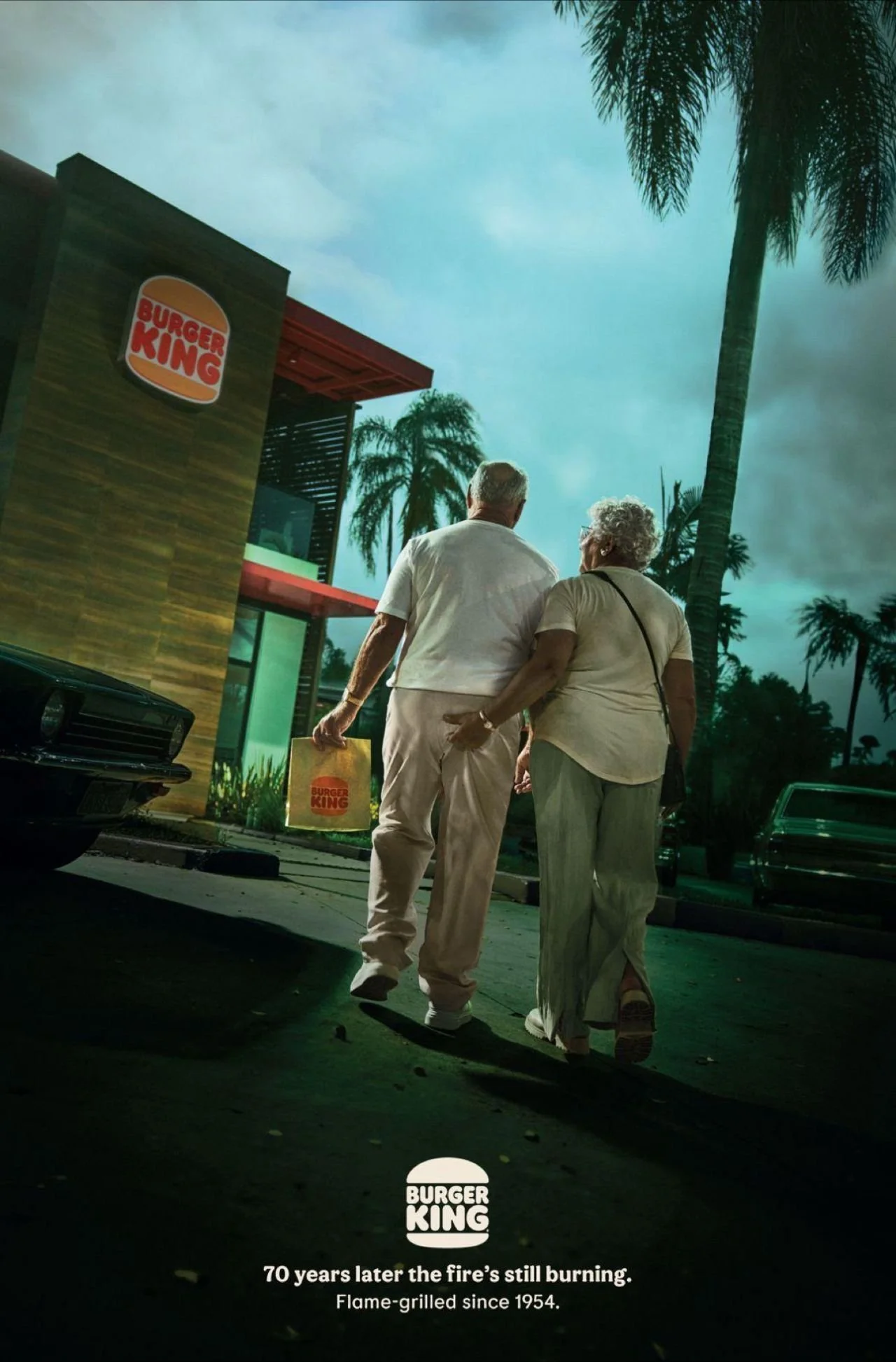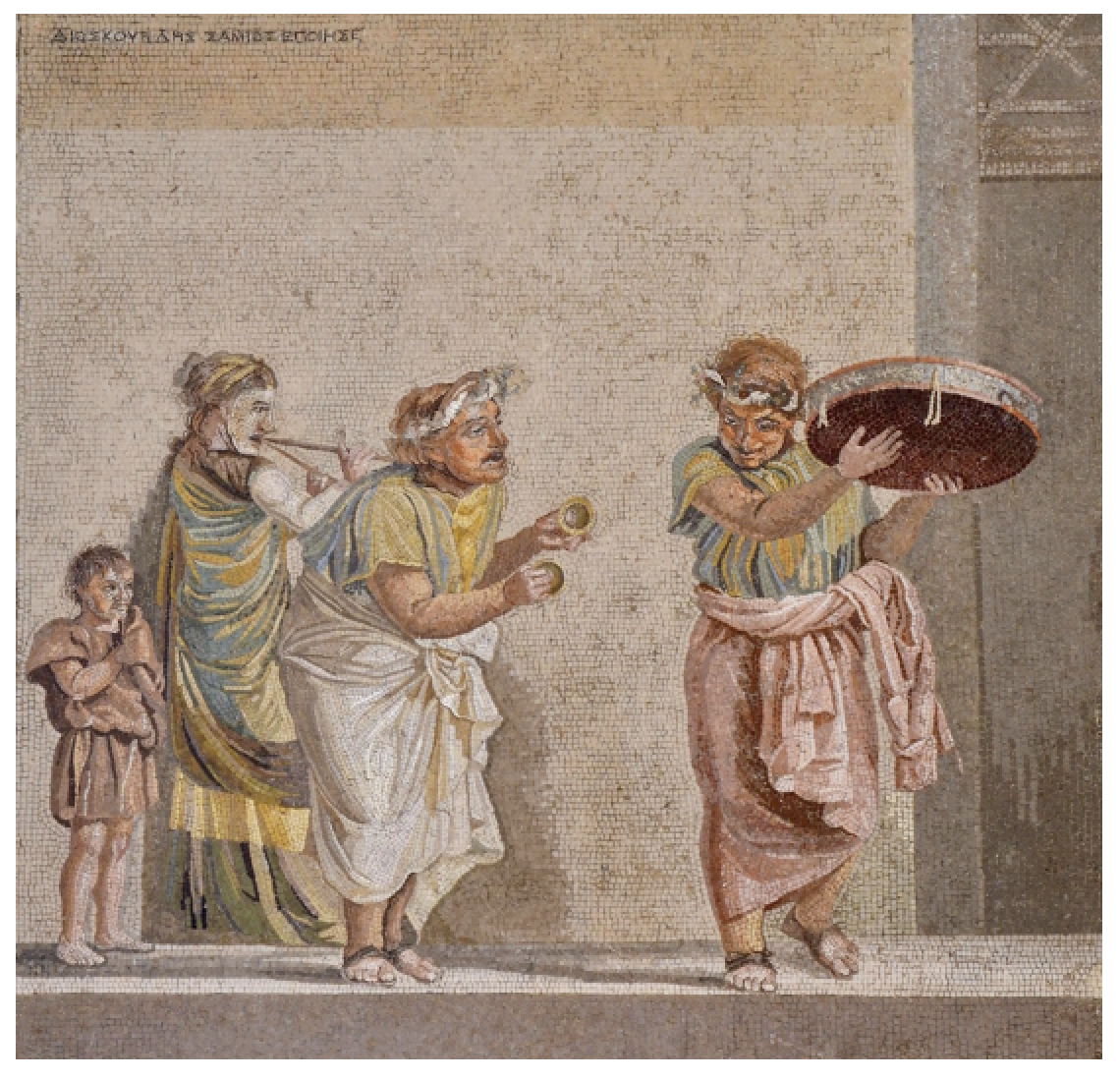Filtering by Tag: Branding
Everything sucks but it doesn't have to
If you pay attention to my LinkedIn profile, which I’m sure you do, you would have seen that I recently read Lemon, by Orlando Wood, Chief Innovation Officer of System1 Group and member of the IPA Effectiveness Advisory Board. I wish I had read it in tandem with someone in the same room so I could say ‘YES!’ and ‘LOOK!’ and generally annoy with them with my exclamations.
Read it, and you’ll see what I mean. No matter if you’re designing social ads, OOH ads, approving creatives or sitting in C-level wondering how to make those numbers look good, you’ll wish you had read it earlier.
And now is the ideal time to read it. It fits perfectly with the current conversations that seem to be inundating my feed about the sorry state of marketing. You know, those ones about how we’ve got to start focusing on long-term initiatives. About how we’ve got to get back to being truly creative – and give ourselves space and time to be creative. About how we’ve got to stop pouring over dashboards and analytics because everyone knows it’s nonsense, and anyway, it’s going away soon.
It feels as if we’re teetering on the edge of change, perhaps brought about by a perfect storm of disillusionment with the industry as a whole, the enshittification of everything, the realisation that long term is just as (if not more) important than short term, and the realisation that oh crap yeah it’s this year cookies are going away. Add to all that the shit show and aftermath of a global pandemic, and a major shift doesn’t seem too far off.
I don’t know. There’s a chance I’m spending too long on LinkedIn, bouncing around my little echo chamber, but the optimist in me likes to think that maybe this general dissatisfaction and these debates around long vs short based on cold hard data are the first indications that we’re moving back into what Orlando Wood dubs a right-brain period. I want to believe that, at the very least, this year, we’ll see a rise in creativity and a pushback against short-terminism.
Lend me your jelly orbs for a bit longer, and allow me to attempt to elucidate.
Honestly, I’m not sure if I can, but I’ll give it a go, and we’ll see where we end up. Good luck.
The right brain, the left brain and mosaics
I know, mosaics. It’s a weird place to start but bear with me.
In Lemon, we’re introduced to Iain McGilchrist and his work on brain lateralisation – the science of the right and left brain.
Our brain is split into two hemispheres. Each works in its own special way and has its own take on its surroundings.
The left brain is short-term. It’s instant. It’s factual. It wants simple words superimposed over a fast-moving montage of expressionless, generic people saying nothing, photographed next to a bit of whatever it is you’re trying to sell. It’s in-your-face obvious and does not entertain.
The right brain is long-term. It understands context. Cultural references. Humour. Implicit emotions. Accents and the plethora of unspoken somethings they contain and communicate. It’s wordplay and a blink-and-you’ll-miss-it look. It’s entertaining and makes you think.
Now, look at these mosaics (stolen from Lemon).
One (left: the Image of Christ, 4th Century A.D.) is flat, restricted, emotionless and featureless. Where are we? No idea. What’s going on? Who knows, and who cares? This would be a left-brain mosaic.
The other (right: scene from New Comedy, late 2nd Century or beginning of 1st Century B.C.) contains subtle nuances, emotions, movement and details. It puts us in the moment and provides perspective and depth. This is a right-brain mosaic.
Essentially (grossly oversimplifying things), these two mosaics represent art history.
We swing from the right brain to the left brain and back again (Renaissance to Reformation, Baroque to Classicism, and so on). Society, religion, government – everything plays its part in this oscillation, and right now, we’re firmly in left brain territory, having left a period of right brain…ness around 2006. We’re stuck in a world of saying hello, having a moment, finding our something and instantly forgettable ads.
So how on earth did we get here? According to Lemon, it’s the inevitable swing of the pendulum thanks to global events, politics, cultural shifts and, in a starring role, social media. And with the latter, I would wholeheartedly agree.
The short-term, quick-fix obsession
From the moment we realised we could track and record attribution from online ads, the more addicted we became to that sweet, sweet high of performance advertising.
Throw another ad out. Track how many people clicked it, visited your site and bought your product. Boom. Attribute sales to that ad.
But, a) attribution is never so black and white, and, more importantly for this blog post, b) the ease and attribution addiction results in shitty ads.
Shitty, left-brain feature riddled ads. Ads that are churned out, often by people with little to no creative experience, and worse, by those who have the experience but are so boxed in by budgets and briefs and bad bosses that they have no other option. They’re ads that require no work to decode and decipher. Ads that literally spell things out for you. And ads that are for everyone – the dreaded global ad. No accents. No wordplay. No innuendo. No cultural references. Even writing it makes me bored.
But performance marketing is fast, simple, and, crucially, you can easily access a dashboard, track ROI and give those numbers to bosses who need them for their bosses.
We’ve become so focused on quick returns that it’s causing damage not only to the level of creative output and advertising effectiveness but also to the bottom line.
“80% of CFOs at 400 of the world’s largest companies would sacrifice a firm’s economic value to meet this quarter’s earning expectations.”
We keep throwing money at digital ads when 77% of B2B ads can be expected to generate zero growth for companies, and 95% of B2B buyers aren’t in the market for your product anyway.
Of course, the good (or bad, depending on your camp) news is that cookies are going away. If this and the above percentages don’t necessitate some kind of change, I’m not sure what does.
So what can you do? Focus on long-term branding efforts. Heck, you can even prove that long-term branding campaigns deliver on both long and short-term goals, while the reverse is not true.
“Advertising mainly works by building and refreshing memory links to a brand – rather than by directly driving sales.”
Long-term builds brand. Long-term builds ESOV. Long-term boosts both long and short-term sales. Long-term makes you top of mind. Long-term works*.
But back to our brains.
*I’m by no means advocating for 100% long-term focus. 60/40 rule and all that
Do ads with right-brain features perform better?
Absolutely yes. “Ads with more right-brain features have a clear advantage on the effectiveness Star rating* over ads with fewer right-brain features.”
The key here is entertainment. Ads that entertain, speak to the right brain, and make people feel something are proven to provide positive long- and short-term effects.
System1 analysed 200 TV ads (100 UK and 100 US) and found that those with more left-brain features proved more likely to achieve a low Star rating, whereas those with more right-brain features proved more like to achieve a high Star rating.
Apologies for the image quality. I had to take a photo of the book then edit it and that was awkward
Remember that Cadbury’s Gorilla ad? “They said, ‘so you want to make an ad three times longer than a normal ad, that doesn’t feature any chocolate and there’s no message?’ It was the hardest thing [I’ve had to sell] in my career.”
Did it work? 10% sales boost says yes.
*The Star rating is a propriety system that predicts market-share growth
What now?
Well, that’s the question, isn’t it? We know what works and what doesn't. We know what we should be doing and what we shouldn’t be doing, but we’re all so hooked on measuring things that can be measured we can’t stop, and we’ve backed ourselves into a corner where all we can do is work that we're not proud of, and we know won't actually work. Is there a better way to kill creativity?
I hope that armed with the knowledge – and proof – that creativity and long-term initiatives positively impact the entire company, from fluffy ol’ brand reputation to sales and profit, we’ll have the courage to shift our focus.
I hope that being forced to abandon our traditional digital dashboards and tools will give us the kick up the collective arse we need in order to change how we use digital ads and how much reliance we’ve put on measuring the data we can so easily access.
I hope that we’ll stop obsessing over instant sales and performance ads and let long-term brand building have its day in the sun.
I’m starting to remind myself of the final five minutes of Shawshank Redemption, so I’ll stop with the hope. You get the idea. I’ll leave you with this quote from Orlando Wood that sums it all up nicely.
“For profit gain, speak to the right brain. Broad and long-term effects are associated with advertising that elicits happiness, that amuses, that leaves people awestruck, that plays to a connection with other people and the wider world.”
On second thoughts, I’ll leave you with this piece of creative genius that I still go and find on YouTube because it’s so goddamn entertaining.
OK, here’s another one, riddled with right-brain goodness. Remember the print ads? They were fantastic. I used to tear them out of magazines and put them on my wall. An ad. On my wall. I’m shaking my head right now.
The end.
Why you should increase brand and content marketing budgets during a crisis – not cut them
Did a recently laid-off content marketer write this? Yes, she did. But that’s neither here nor there. The crux remains the same; the best time to pull ahead is when everyone else is pulling back. In plain English, during a crisis, you should not cut brand and content budgets; you should increase them.
This blog post will regurgitate a lot of words and sentences you’ve probably (hopefully) read before, but if that’s not what blogging is, I don’t know what is.
Here we go.
Brand and content? Are you nuts, Sheila?
TL;DR
Brand and content marketing are solid financial investments that have been proven to increase ESOV and sales in the long term. In times of crisis, companies often cut brand and content marketing budgets because they’re focused on the short term instead of the long term. This has been proven to be damaging for business post-crisis. To reverse this, reverse the action; do not cut brand and content marketing budgets.
“There aren’t that many business clients that will say ‘You know what, I’m comfortable signing a contract with a company that I’ve hardly ever heard of before’.”
No one wants what you’re selling
Let’s start at the very beginning, and what a fun place it is to start.
Even at the best of times, 95% of your customers are not ‘in-market’ to buy whatever it is you’re selling, but only 8% of your marketing budget is spent on brand awareness.
What does this mean? It means no one wants what you’re selling, so stop trying to do a hard-bottom-of-the-funnel-sell with 92% of your budget to that 95% because they simply don’t care.
What can you do? You could up that pitiful 8% and focus on building brand awareness and stickiness and all that jazz through targeted content so that when that 95% are ready to buy, who do they remember? You.
“Maintaining your budget through this recession and seeing the long-term picture will grow your market share significantly as we come out of this recession, and if you’re smart and bold enough to increase budgets during this recession, the post-recession growth you’ll experience will set up your brand for the long term. The data is clear.”
B2B2C2B2 – whatever, it’s all the same
More B2B marketers are beginning to realise that it doesn’t really matter if you’re in the B2B or B2C marketing game because whichever you’re doing there’s still a human being at the other end. Because of this astounding revelation, we’re seeing a shift towards more creative B2B marketing campaigns, with them adopting tenets typically associated with traditional B2C marketing, like storytelling or, I dunno, whimsical OOH ads.
About bloody time, if you ask me. I remember, way back when I was a dewy-eyed marketer, furtively talking with colleagues over a sneaky fag about B2C2B when it was considered, like, totally whack to think that you could just maybe possibly use some of the same tactics of B2C marketing for B2B because, well, humans. Anyway. The penny is dropping, and I am here for it.
But why am I talking about this? Because it’s so refreshing to see traditional B2B marketing putting thought and resources into beautiful brand marketing. That CFO/engineer/office manager? They’re still (doom) scrolling through Instagram/TikTok/Twitter as well as LinkedIn, you know. They’ve still got eyeballs to get in front of and emotions to blackmail. Or influence or whatever.
Lol Gregory, we’ve got words like product and sales written on the board, we don’t need “brand”
As MarketingWeek says, “The shift to brand [marketing] will benefit businesses, since brand 1) increases long- and short-term sales, 2) improves pricing power, 3) reduces talent acquisition and retention costs, 4) unlocks growth in new categories, and much more.”
In fact, brand awareness is so hot right now that it’s the top priority for marketers across all media channels, with customer acquisition cited as the second most-valued goal.
So we agree. No one wants what we’re selling even in the best of times so we should focus on brand awareness which we all love because we recognise its importance for long-term benefits.
Sounds good, right?
So why do we keep seeing brand and content marketing budgets slashed whenever we stumble into a crisis?
“Cutting marketing costs will decrease brand awareness, search result ranking, and brand loyalty. This leaves plenty of room for competitors to fill the void and take the lead in the market.”
A tale as old as time
It’s been proven time and time again that the best strategy to adopt during downturns is to continue – and even increase – marketing investments in order to capitalise on long-term ROI (as a pleasing bonus, advertising gets cheaper because competitors are pulling out. What’s not to like?).
I know, I know, it’s reductive, and the situation is different for every business, but let’s make sweeping generalisations here because it’s my blog and I can.
So far, I’ve worked through two crises. First, there was the joy of COVID, and now this recession that’s been thoughtfully slapped onto the end of it by, well, COVID itself and by everyone freaking out about it.
Both times, I saw the company I was working for slash marketing budgets immediately. Unfortunately for me, both times, the slashing has focused on the fluffy ethereal marketing that some people struggle to understand the value of; brand and content.
“There is an idiot move at the top of the agenda of all those who do not understand history. They see marketing as a cost. Advertising as a luxury. And brand building as the ultimate vanity. Ergo, when times get tough it’s obvious that the first thing to go is the esoteric brand budget and not performance marketing with the proven and immediate ROI.”
Sad face.
Here’s some research based on interviews with 700 CEOs and CMOs by Clear M&C Saatchi. It highlights four factors that limit businesses in a crisis:
Strategy is stuck in the boardroom
Alignment exists on goals but not on tactics
Too much focus on the short term
Marketing is over-stretched in terms of capacity and capability
Now all four factors are pretty eye-roll worthy, and God knows we can all relate, but I’ll focus on number three, that pesky short-term silliness.
I get it. It’s a crisis; let’s light a fire under people’s asses and get ALL THE LEADS. But no one wants your product, remember? Why, when they’re in the same storm you’re in, would they suddenly decide to spend their precious cash on your product when they didn’t even want it in the first place?
“If your boss tells you ‘I want all of our marketing initiatives to show a positive ROI within the next two months’ you’ve lost the game before you’ve even started it. You are mis-measuring what success means and therefore you are going to mismanage your marketing activities. There is a lot of that happening and it needs to change.”
Yes, short-term savings are essential and might give you a good-looking ROCE during the crisis, but businesses that don’t falter and instead continue to invest in brand throughout a crisis will ultimately realise long-term profitability after the crisis. When things calm down again, you’ll have edged out in front of your competitors – thanks partly to ESOV – and there you shall stay and reap the rewards for doing the right thing. As Mark Ritson said, it’s a tactical challenge but a strategic opportunity.
“Brands are not much defence when the shit hits the fan, but brands and brand equity are useful in the second phase where we begin to see, at the end of the recession, a move towards growth and normality. The acceleration of a strong brand is much greater than less strong brands – that’s why you should invest in them in a recession because they will return in terms of a growth catalyst as we come out of it.”
And then she said … CONTENT MARKETING!
So what’s the conclusion?
This might not come as a surprise, but don’t cut your brand and content marketing budgets during a crisis. They are not nice-to-haves; they are strategic initiatives that can create a huge amount of value for companies in the best of times and in the worst of times.
Now’s your chance to steal all that market share from your competitors. To stand out. To be remembered. Invest for the future. Not now. That’s why it’s called investment. It’s for the future. You want to be there, top of mind for your target customers, so that when they are ready to fork out for whatever you’re offering, they not only think of you, but they can’t avoid you because you never went away.
Can’t afford to increase budgets? That’s OK. Just don’t cut. Instead, realign, reassess and repurpose.
Realign based on what the competition is doing and what the market looks like
Reassess your customer needs and pain points and adjust your strategy
Repurpose existing content to fit new tactics and save costs
Work on pushing up that ESOV while everyone else is off wringing their hands and by the time this is all over, you’ll be top of mind and ready to sell.
Boom.










